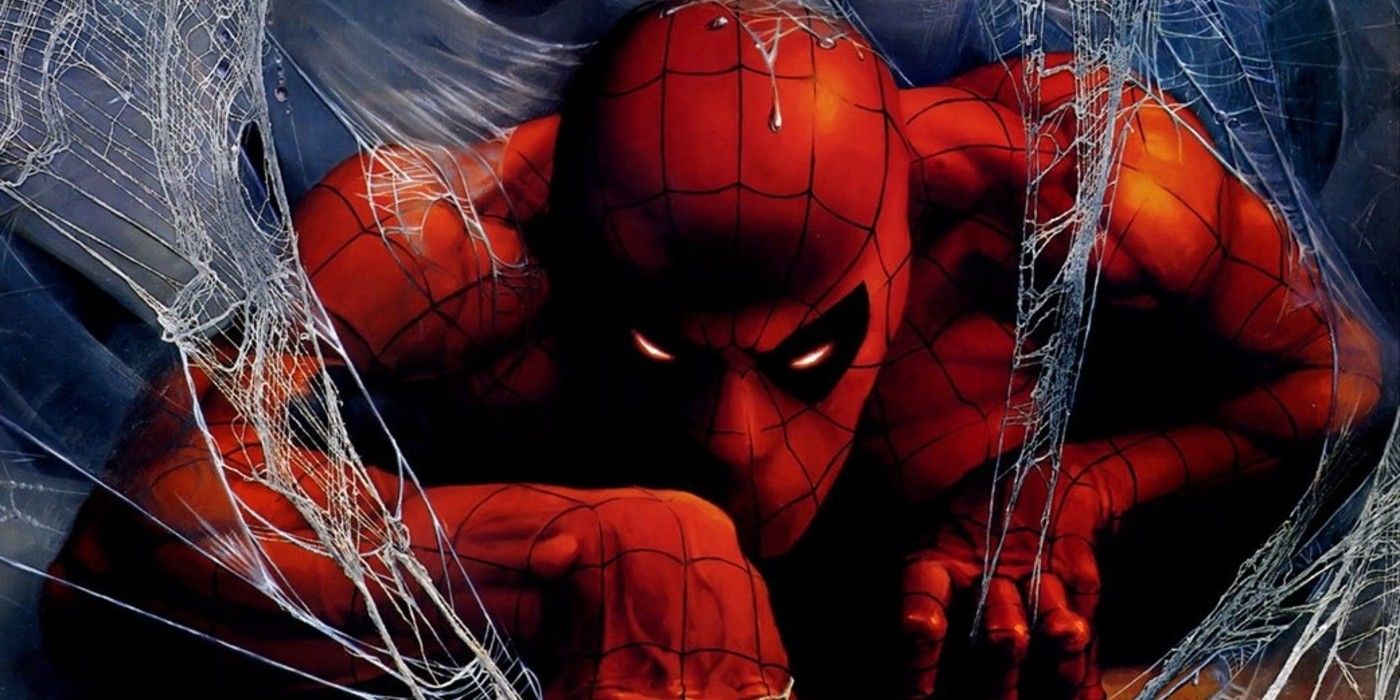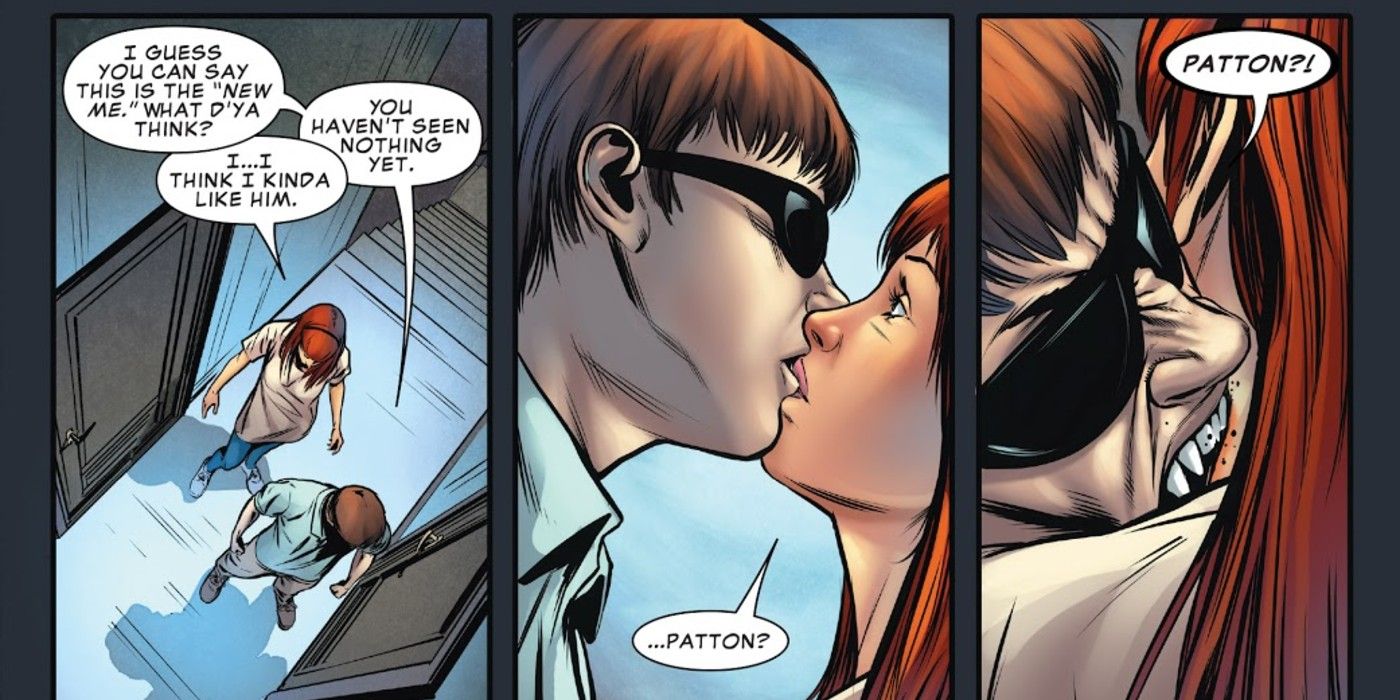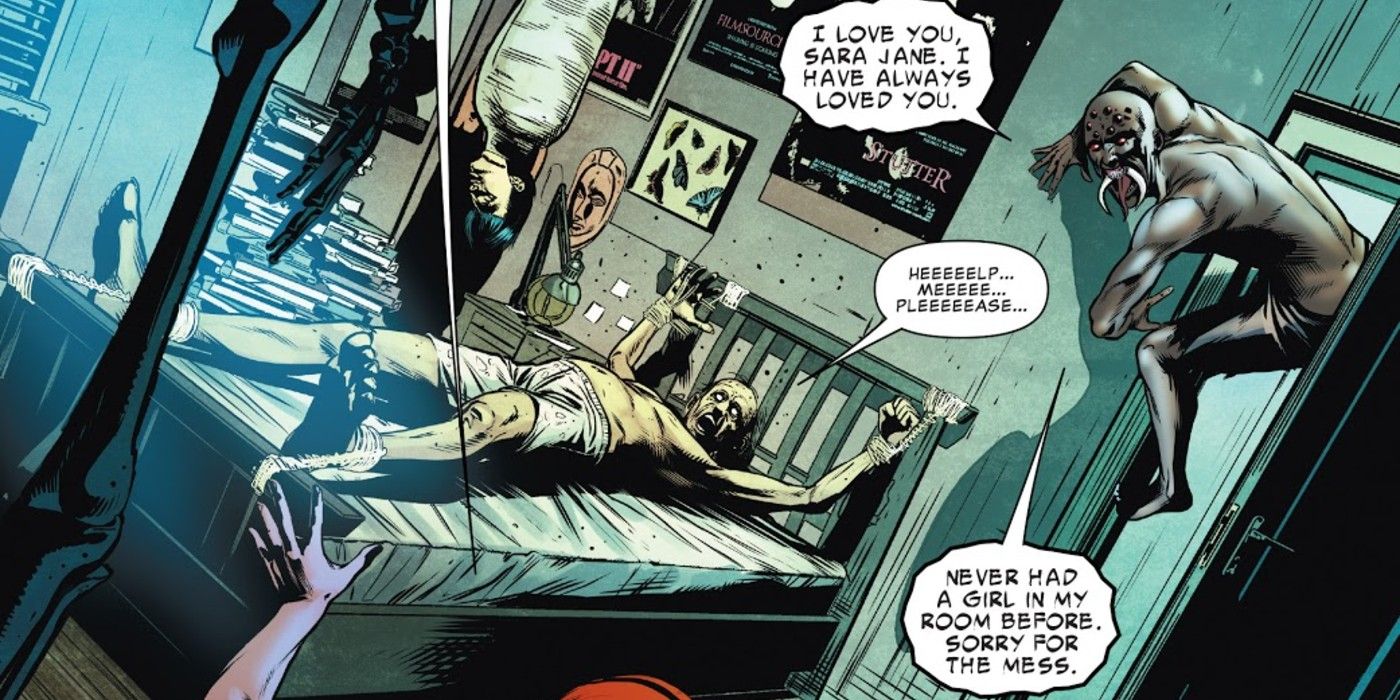The most disturbing version of Spider-Man is a literal and figurative mutilation of everything Peter Parker represents, and he was introduced in what may be the most horrifying comic Marvel has ever put to print. Through the years, Marvel has allowed a handful of their mainstream characters to dip into the realm of horror - with Al Ewing's Immortal Hulk being one of the best and most current examples - but never has a popular Marvel character been turned into the kind of irredeemable monster Spider-Man was depicted as in Edge of Spider-Verse #4 by Clay McLeod Chapman and Elia Bonetti.
Edge of Spider-Verse was a five-part miniseries that acted as a precursor to the main Spider-Verse storyline, which famously saw a number of alternate universe versions of Spider-Man teaming up for the first time ever. Each issue of Edge of Spider-Verse featured a new spider-themed character from the multiverse with their own unique twist on the classic Spider-Man origin story. Issue two's first-ever appearance of Spider-Gwen quickly became the most popular of the bunch, but issue four's nightmare-inducing introduction of Patton Parnel - a highly disturbing twist on the classic Peter Parker - was better left forgotten by the more squeamish among fans.
Some of the earliest issues of The Amazing Spider-Man portrayed Peter Parker as bitter and resentful about his place in the world, with the love and wisdom imparted by his Aunt May and Uncle Ben acting as the driving force behind his ultimate choice to do good. In Patton Parnel's world, however, Aunt May isn't even in the picture, and his Uncle Ted is a vile man who regularly beats and ridicules his nephew. As a result of his twisted upbringing, Patton is an antisocial recluse who spends most of his time 'experimenting' on insects and animals through torturous means. That is of course, when he's not secretly 'observing' his classmate and next-door neighbor, Sara Jane, through his binoculars.
Much like most of his multiversal counterparts, Patton eventually ends up bitten by an enhanced spider, only the manifestation of his powers are about as repulsive as he is on the inside. His teeth turn razor sharp as he develops a taste for the living, starting with a mouse and eventually graduating to human flesh. And that's not even the most horrifying part. Before consuming his victims, Patton entangles them in webbed cocoons that he keeps hung around his room.
Using his powers to help people barely even crosses this disturbed young man's mind. Instead, he sets his sights on reproducing, which he quickly discovers he's capable of doing by transferring his eggs through other people. Naturally, Patton decides his Uncle Ted and Sara Jane are perfect vessels. After impregnating poor Ted, Patton invites Sara to his home, where he implants his eggs inside her through a bite to her neck just before revealing his terrifying true form - a demonic-looking, four-armed Man-Spider with a pair of sharp tusks and eight beady red eyes. Sara manages to break free, which leads to a classic horror movie ending - she returns home and tells herself it was all just a bad dream, until the eggs within her hatch, resulting in thousands of spiders crawling out of her neck wound and all over her face.
There's certainly no shortage of alternate universe stories featuring highly popular characters these days, but it's rare to see mainstream comic book heroes portrayed in such an alarmingly repugnant manner as Spider-Man was in Edge of Spider-Verse. Diving into the grittiest parts of the multiverse allows for an opportunity to investigate the primary versions of these characters in new ways. Does simply removing the positive influences of Uncle Ben and Aunt May from Peter Parker's life more often than not result in a Spider-Man that makes a turn for the worse? Whatever insights may be gained, there's no denying that Patton Parnel is easily the most hideous version of Spider-Man ever created.



